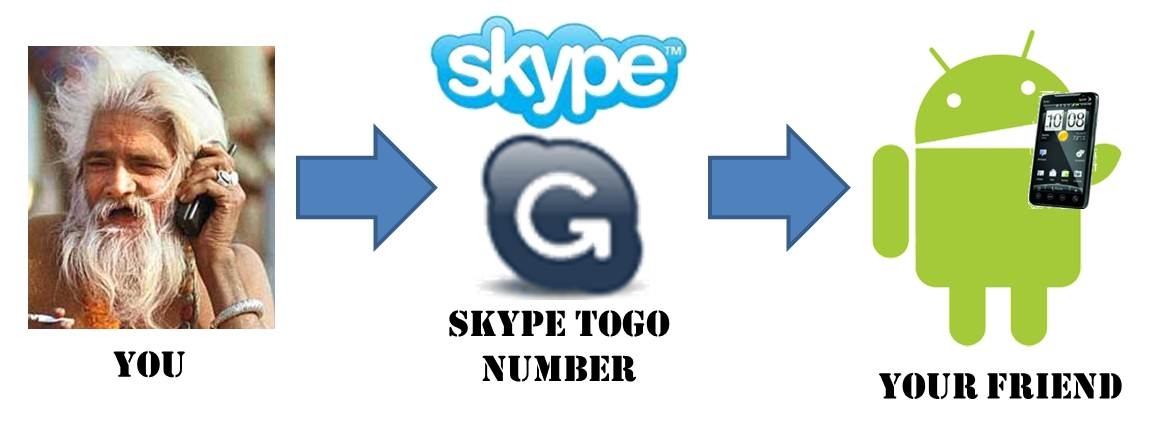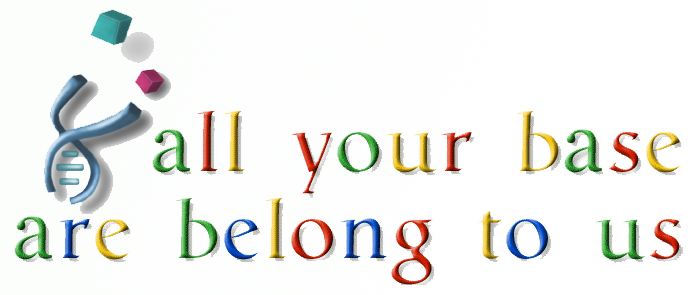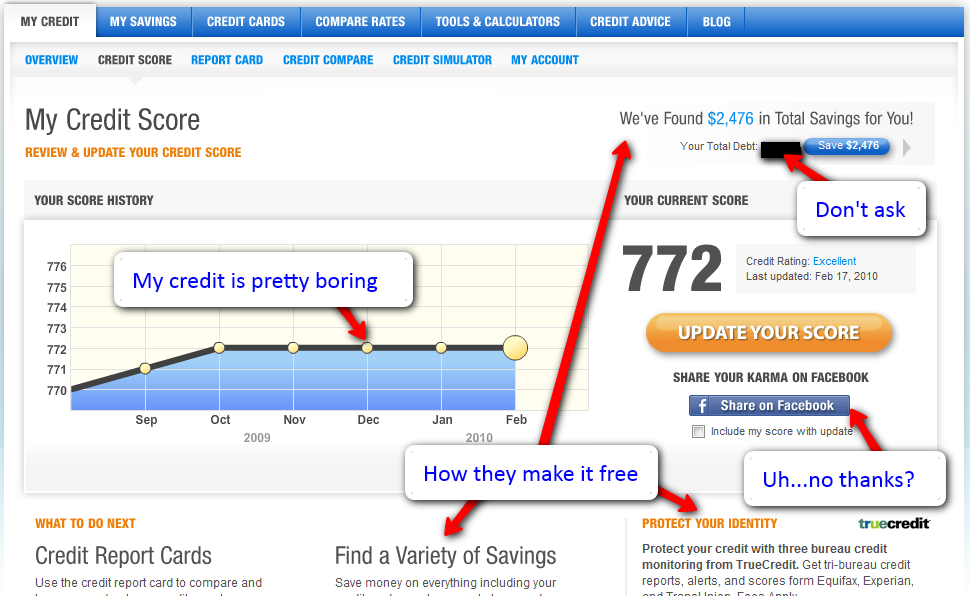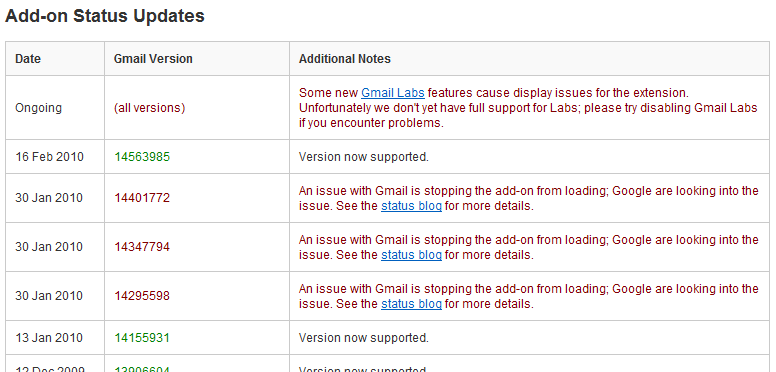OverExpressed
OverExpressedUsing Google Voice and Skype to Make and Receive Calls while Abroad
Getting your communications set up abroad can be a real pain, particularly if you want to have regular international communication. I’m spending 2 months doing research in Cape Town, South Africa, so I wanted to find a cheap solution for keeping in touch with people back in the states. I ended up going with Google Voice & Skype to make and receive calls at a cheaper rate than what I could get using a carrier directly.
Of course I could have just used my Sprint Android phone here, but their international rates were obscene. And I couldn’t just slip a new SIM card in (Sprint is CDMA), so I started off with purchasing a cheap new phone at a Cell C store here (local phone company). If you’re also on a non-GSM phone, you should be able to purchase a cheap phone for <$50 wherever you are.
Receiving Calls
In an ideal world, your friend would call you using some sort of fancy VOIP landline, like Vonage, which would allow them to make free international calls directly to your international number (this is what my parents do). However, landlines seem to be mostly dead among our generation, so you have to give another option for friends who want to call you directly from a mobile phone.
I first set up a Skype Online Number (previously known as a SkypeIn Number), which is basically a local phone number that forwards directly to your Skype account. I set mine to be a local number for the SF Bay area, but you’d want to make it whatever is cheapest for your friends to call. Whenever someone calls this number, they will be forwarded to your Skype account (so you can answer them from your computer if you’re online, and neither of you will be charged any additional fees).
If you then want these calls to forward to your cell phone abroad, you can set up Skype Call Forwarding. This service will forward calls to a number of your choice whenever you are not logged into Skype on a computer. The rates are a bit confusing, as you actually go by the regular Skype pay as you go call rates (they don’t have any special rates for the forwarding service – it’s treated the same as if you used Skype to call a phone in that particular country). Some representative forwarding rates for mobile phones (charged to you, not your friend) include (from cheap->expensive): China – $0.024/min, United States – $0.024/min, South Korea – $0.084, Taiwan – $0.116/min, Japan – $0.177/min, Ireland – $0.227/min, South Africa – $0.268/min, UK – $0.291/min, Spain – $0.312/min, Peru – $0.352/min. These rates are much lower if you’re having them forwarded to a landline (but then, you should probably just pick the call up on a computer for free directly).
Finally, if you really want to simplify things for your friends, you can add your Skype Online Number to your Google Voice profile, allowing people to reach you on your international cell phone by just calling the Google Voice number they’re already used to. You can even set up rules and filters to make sure you limit who can actually reach your international phone directly.
Making Calls
In order to make calls, you’ll want to set up a Skype To Go Number. This is similar to the Skype Online Number (that people call from your home country), but it’s a local number generated for the country where you’re traveling (you can create multiple Skype To Go numbers, too, if you’re traveling to several places). Then, using your mobile phone, you can call the Skype To Go number where you’ll get a prompt offering to connect you with one of your contacts (you can set up to 6 contacts online beforehand). This is obviously suboptimal as you lose access to your primary contacts list. But it’s the best way I’ve found. Skype will also let you adjust what number shows up on your friend’s caller ID when using this method (so you could set it to be your Google Voice number, so they’d have no idea you’re calling from Timbuktu).
When receiving calls, the only fee you have to pay is usually the small Skype rate per minute (most pay-as-you-go phones don’t charge for receiving calls, so you don’t incur additional fees from your provider abroad). However, if you want to make a call to someone internationally, you’ll be paying whatever your international provider rate is to call the local Skype To Go number, plus the Skype call rate for mobile phones in your area (same prices listed above). For me, this works out to 1.50 Rand (~$0.21)/min. So I’d usually only do this to call a contact and then ask them to call me back (so I don’t get charged $0.268/min from Skype + $0.21/min from Cell C).
The Competition
There are a number of other players coming up in this field. There are even several that could be cheaper than Skype (depending on which country you’re in). It’s definitely worth checking them out for your particular circumstances, but they all basically work how I described above. Competitors include Rebtel, Vopium, LocalPhone, TollFreeForwarding, and Ribbit Mobile.
Hopefully the Google Voice product will be extended to international calling soon, abrogating the need for this jerry-rigged system (and also giving you access to your entire contacts library when calling from abroad). It would also be nice to see all the major service providers using compatible networks, so users can easily switch their phones as they travel (I unfortunately didn’t think about this too much when I joined Sprint). But there have been a few perks to my brief romance with a “dumb” phone. The battery lasts for days, and I can definitely trust it to start up and shut down immediately when I want it to. Now if only the camera could take pictures with more than 17 pixels in them…
Update: According to @DouglasHwang, Skype fails behind the Great Firewall of China. Lame. Maybe one of those other competitors works, though.
Continue Reading | 21 Comments
Tags: Android, Google, Google Voice, Phone, Skype, stuff-i-use, Travel
Eagerly awaiting my genetic destiny
I’m about to see some things that can’t be unseen, to learn some things that can’t be unlearned, and to think some things that can’t be unthought. Within less than a fortnight, a significant amount of my genetic destiny will be revealed to me by the magic of consumer genetics. And the suspense is killing me.
As a metrics and diy bio junky, I’ve been very eager to explore the essential blueprints to my being. It’s incredible to even imagine that most everything I am can be reduced to a fundamental set of instructions based on patterns of just four letters (the rest can be accounted for by ‘nurture’, which for me is mainly an amalgam of adventure novels and Saved by the Bell episodes, as best I can tell).
When I first heard about 23andme several years ago, I was pretty sure the future was coming fast. However, the price tag was still a bit steep for me. Considering the Moore’s Law depreciation of sequencing costs, I just couldn’t rationalize the expense for a report that didn’t even cover my entire genome. I even signed up for the Personal Genome Project in the interim. Unfortunately, they still haven’t taken me in, and my enrollment seems unlikely given their preference for people with known rare genetic conditions. So I’ve waited for the price to go down.
Happy DNA Day!
And finally an opportunity for low-cost genotyping! April 23rd was National DNA Day, during which 23andme (named after your 23 chromosome pairs), offered their full package (including ancestry, health, and extended sequence access) for just $99. This was a $400 discount from the normal $499 price tag. Obviously, I jumped on the deal.
Of course, 23andme is just one of many consumer sequencing companies (including Navegenics, deCODEme, and Knome, among others). However, 23andme offers one of the most complete offerings I’ve found. They give you ~600,000 known “single nucleotide polymorphisms” (or SNP’s, basically just single letters in your sequence where you’re likely to vary from others in a meaningful way), including mitochondrial DNA. Granted, this is just a small portion of my entire genome (only ~0.02% of my 3 billion bases, to be ~exact). However, it represents many of the significant places (or loci) where I differ from you or anyone else. It also includes many compelling factors involved with a range of heritable conditions. And I’ll be particularly interested to learn things like my eye and hair color.
Some Reasonable Caution
 Now, it’s not a terrible idea to take a step back and consider the consequences of such deep self-knowledge. First of all, I have to ponder the psychological impacts this information could have on me. What if I find out I have some rare genetic disorder that is reliably linked to a terminal illness? What if I find some factors that would indicate the need for a drastic change in lifestyle? What if my dad isn’t my dad? What if I find that I’m completely boring, genetically? These are all possibilities. But I’m prepared (or at least momentarily indifferent) to their consequences. I believe that understanding the root of your medical condition can help you make educated choices moving forward, and I intend to leverage any information I gain.
Now, it’s not a terrible idea to take a step back and consider the consequences of such deep self-knowledge. First of all, I have to ponder the psychological impacts this information could have on me. What if I find out I have some rare genetic disorder that is reliably linked to a terminal illness? What if I find some factors that would indicate the need for a drastic change in lifestyle? What if my dad isn’t my dad? What if I find that I’m completely boring, genetically? These are all possibilities. But I’m prepared (or at least momentarily indifferent) to their consequences. I believe that understanding the root of your medical condition can help you make educated choices moving forward, and I intend to leverage any information I gain.
However, I am slightly more suspicious of the potential legal implications. Just imagine a Gattaca-esque world (by the way – notice the title is made of A, T, G, C) where your job, insurance, and even mate, are essentially determined by the strength of your genetic code. That’s some pretty scary stuff. And most people don’t seem to realize how close we are to this (at least technologically). There are already a number of opportunities for genetic theft. It will be very important for the government to enact some tough regulations that can withstand any assault on personal genomic privacy. Fortunately, we currently have a law protecting us from genetic discrimination with respect to insurance and employment.
What I Hope to Get Out of This
It’s no secret that I’m a fan of data. I’d like to be as quantitative as possible in my life choices. Within the realm of health, this has primarily manifested itself in the use of activity-tracking applicaitons, such as CardioTrainer for running and Daily Burn (formerly Gyminee) for weight training. However, my genome represents a vast bank of data that I could never empirically derive by phenotypic analysis alone. I’m super excited to finally get access to even a small portion of this raw data.
Although obviously I could have accessed a lot of this information by myself using several methods (including outsourcing directly to Illumina, as 23andme has done), I wanted to go through one of these companies (and 23andme in particular). This is mainly because I appreciate all of the additional analysis and formatting they provide in presenting the absolutely daunting amount of information contained in my raw genetic sequences. They’ve developed some simple tools to show my ancestry, as well as my health risks (weighted by the reliability of the associated studies in a 5-star format) in a secure, web-based format. Though I could collect and analyze this information myself, it would certainly take a significant amount of effort, and thus I’m willing to pay a service to provide this convenient user experience.
And speaking of user experience, it’s interesting to note the relationship between 23andme and Google. Specifically, 23andme received a significant amount of funding from Google (mildly controversial since 23andme cofounder Anne Wojcicki is married to Google cofounder Sergey Brin). But this all makes sense to me. It is Google’s stated goal to “organize the world’s information and make it universally accessible and useful.” Personal genomic data is perhaps some of the most useful information out there, and Google clearly has an interest in organizing it. Considering what they’ve done for the web, I’m excited to see what they can do to simplify genetic relationships. And I suppose I’m about to find out. All my base are belong to Google.
Continue Reading | No Comments
Tags: 23andMe, biology, Consumer Genetics, DNA, Genetics, Knome, Personal Health, Science, Single-nucleotide polymorphism
Google Voice makes your phone smarter
It’s amazing to think how much communication has changed just during my quarter century of life. I got to see the rise of the internet, cell phones, and then cell phones with internet. Bad-ass. Now it’s hard to imagine what communication will look like 25 years from now, but I’ll bet Google will help push us there in at least some respects. For example, telephone communications suffer from a number of obnoxious shortcomings that Google has solved through their acquisition and subsequent development of Grand Central, a service you might better recognize as Google Voice.
Sometimes Google makes awesome acquisitions
Google has really been on top of its game when it comes to acquiring awesome products (YouTube, Etherpad, Picnik, Aardvark, Docverse, etc.). But one of their greatest claims has been Grand Central. I remember a few years ago when I was using Callwave to transcribe my voicemails and Grand Central to control the flow of my calls from phone to phone. Eventually, Callwave began charging for the service and, being a cheap grad student, I switched to Messagesling (deadpooled, unfortunately). However, my investment in Grand Central was validated when Google acquired them in 2007. But this basically lead to a lot of frustration on our end, as Google seemed to neglect the service for over a year. And then, out of nowhere, Google released Grand Central again, but rebranded as Google Voice. And the new service offered a number of improved features (including voice-to-text transcription). This quickly became my primary telephony manager.
Google Voice has more features than you can shake a stick at
But that’s ok, you don’t have to use all of them. But just in case you’re curious, here’s a summary:
- Call Forwarding | You set up a custom phone number (area code of your choice) that acts like a forwarding email address. Anyone calling this number passes through Google’s pipes and gets directed to one or more of your phones based on individual and group settings (coworkers ring the work phone, friends ring the cell).
- Voicemail Transcription | Although the accuracy is questionable, I can generally get the gist of the voicemail based on the transcription, eliminating the need to waste time listening to most messages.
- Call Recording | Simply pressing ‘4’ during a received call starts audio recording (saved to your Google Voice account). Unfortunately this doesn’t appear to work for outgoing calls yet, but would be awesome for keeping track of customer support communications (for quality assurance purposes only, of course).
- Searchable Aggregation| Everything is stored within arm’s reach, and it’s all searchable. You can finally get your personal and work communications all together.
- Free SMS | SMS is the biggest scam when it comes to mobile charges, but you can bypass these rates using Google Voice’s SMS capabilities (via the web or the native application). Although Sprint offers reasonable rates on plans with unlimited texts.
- Phone on the Interwebs | You can readily search your text messages and voicemails via the intuitive web interface, Android application, or mobile website (for those stuck with iPhones). Google offers call widgets to ease communication even further. I generally use the chrome plugin to manage texts and voicemails when I’m at my computer.
- Be an Asshole | Google Voice gives you lots of opportunities here. When someone calls, you have the option to listen-in as they leave a voicemail, deciding whether their puny request merits a response. You can also block numbers with ease, or set up granular options to forward to voicemail.
Room for improvement
While Google is definitely pushing some metaphorical envelopes with its Voice product, there are still quite a few critical envelopes looking for some pushing-love.
- Let’s begin with integration. If you don’t have a smart phone capable of running the Google Voice app (including the magic phone), you have to deal with a browser interface, which makes the app basically useless (it would just confuse your friends when you call from a different number from what they have stored).
- Even if you do have the authentic GVoice application, there doesn’t seem to be really good SMS integration. The app must remain open in order to receive notifications of text messages sent to GVoice (I circumvent this by having GVoice notifications forward to gmail, but not my SMS, so I get voicemail/SMS notification via the gmail notifier on Android). However, this means you’re out of luck if you wander somewhere without a data connection, like Kirkwood at Lake Tahoe.
- Google still seems to be having trouble working out number porting, so you can’t quite port your current number over yet. But they do let you make Google Voice your designated voicemail inbox for your current number.
- The Google Voice site seems a bit superfluous, and would probably be best implemented like Buzz, as an integrated layer within gmail. I already have these events forwarding to gmail, but really the whole communication interface should probably be there. Threading is also pretty bad in google voice, making SMS conversations a bit cumbersome to deal with.
- I still haven’t noticed much in the way of third party development on Google Voice. This could lend a lot of power to Google’s platform, so it’s probably just a matter of time before it happens. Especially considering the competition is playing this very angle.
Competition
Although Google seems to be safely ahead of its competitors, there is still quite a big market to grab, with a number of players reaching for it. Ribbit has already promoted some early showcases of its salesforce-style solution to telephony. Apple is also competing with Google Voice in some respects, trying to fascistitize it out of the app market because it’s better than Apple’s native interface. Gizmo5 also had an interesting technology until – oops, acquired by Google. Of course you can’t ignore the big old school fish in the new school sea, as Microsoft promotes their Phone Data Manager. There’s also Jajah and Skype for calling, Skydeck to track calls, Zyb to manage contacts, Slydial to sneak around voicemail, and Jott to interface with messaging. Am I forgetting anyone? I guess it doesn’t really matter, Google Voice will take over anyway. U! S! A! U! S! A!!!
Tags: Google, GoogleVoice, Grand Central, Mobile phone, SMS, stuff-i-use, Telephone, Telephony
Track your credit score for free with CreditKarma
 People seem to think credit scores are really important. I guess I haven’t really seen the value so much as a grad student who isn’t taking out any mortgages, though it probably had an impact on my auto loan a few years back. But I trust the finance people, it’s probably something to be concerned about when it comes to borrowing money for a car, a house, or a bikini. But really, I just like metrics of any kind, so of course I became interested in credit reports.
People seem to think credit scores are really important. I guess I haven’t really seen the value so much as a grad student who isn’t taking out any mortgages, though it probably had an impact on my auto loan a few years back. But I trust the finance people, it’s probably something to be concerned about when it comes to borrowing money for a car, a house, or a bikini. But really, I just like metrics of any kind, so of course I became interested in credit reports.
Prior to discovering CreditKarma, I used to get 3 free credit reports a year using annualcreditreport.com (note: don’t fall for the catchy jingles, freecreditreport.com is a scam). The basic idea is that each of the 3 major US credit reporting agencies is required by law to provide you with one free credit report a year, so I just made a note on my calendar to check a specific agency every 4 months. But this doesn’t give your actual credit score, just a report of your current number of accounts and a history of bad things you may have done. You usually have to pay some extra fee to get the score, unless you want to play a game of chicken with cancellation deadlines (which I’ve done before). But I’m done with all that now that I’ve found CreditKarma.
CreditKarma is free and it’s pretty awesome
CreditKarma is sort of like a Mint for your credit score. You have to enter your credentials once (name, address, social security number), and then they’ll track your score on a monthly basis (but they’ll also check it instantly at any point that you want). It’s important to note that these aren’t “hard” credit inquiries, so they don’t hurt your score. It’s also important to note that a lot of people are afraid of identity theft and martians and other crazy stuff, but the company seems pretty reliable to me.
Beyond quantifying your fiscal dependability in a single number, CreditKarma also provides some nice reports breaking down the individual areas that contribute to that score. They give you a letter grade and a percentile ranking relative to the rest of the herd, helping point you in the right direction to bring that score up to par. On top of that, you can run a “credit simulation” to predict how your credit would change based on a range of choices (paying off your loan, getting a new credit card, selling your soul, etc.). Ok, maybe not that last one. Anyway, all of this is pretty nice, with the only real catch being the targeted offers they show you. Fortunately, there aren’t any annoying pop-up ads, so it doesn’t really hurt the site’s credibility much…which I guess is good for a credit scoring site.
Continue Reading | 10 Comments
Tags: Credit, Credit Score, CreditKarma, Finance, Money, Personal finance, stuff-i-use
My problem with gmail and buzz – they broke RTM
Ok, I’m a huge fan of gmail. And I’m actually pretty happy with buzz as it’s opened up conversations with people I don’t normally interact with via standard web-based social networks. It’s also great how quick Google is to implement enhancements to these products. But this has led to one major issue I’ve had with google over the past couple of years – their updates frequently break third party plugins that leverage google’s API’s.
<rant>
Of course I wouldn’t necessarily expect Google to work hand-in-hand with every single third party developer, but they should at least keep some major ones in the know. In this case I’m referring to Remember the Milk. One of the most useful applications I’ve encountered on the web is the Remember the Milk plugin for gmail. For those who aren’t in the know, RTM is a simple task manager that lets you easily add tasks by typing things like “Send in rent check Thursday”. But really there isn’t anything that special about RTM when compared with the vast array of competitors (PhiTodo, Taskbarn, Remindr, teamtasks, Task2Gather, TheBigPic, Producteev, Basecamp, Planzone, and LifeTick, to name a few). In fact, RTM really disappoints when it comes to organizing and planning big-picture goals (TheBigPic and LifeTick are both much better for this). But the key redeeming feature for RTM is the gmail plugin.
The RTM gmail plugin is incredible. It is one of the few utilities that I absolutely rely on to remain organized on a day-to-day basis (others include gmail and gcal). And the key feature of the gmail plugin is that you can simply star an email and have it automatically become a task in the RTM side panel. This is extremely helpful for keeping up with emails. I can prioritize and postpone responses by relevance, and clicking on the task in the side panel will pull the relevant email up so I can address it right away. These features are especially critical since probably 70% of my tasks come as emails.
Google Broke RTM
However (and this is where my beef with gmail comes in), Google frequently updates the code for gmail, and many times that actually breaks features in the RTM plugin (with over 90 instances of a break and a required RTM fix!). It’s generally only a relatively small break for a day or so. But for for the past three weeks (up until late Monday night), the RTM plugin has been completely down. This is, of course, because of Google’s wide-spread updates and code freeze associated with the release of Buzz, though we had no way of knowing that when the issue first cropped up in the RTM forums.
So it’s mildly frustrating relying so heavily on a plugin that is at the mercy of every minor update pushed by Google. I’m hopeful that Google will try to work more closely with RTM in the future. Or maybe they could improve their own native Tasks application to bring it on par with RTM’s other features (though that’s obviously the more monopolistic solution).
</rant>
Anyway, I guess the main take-aways here are:
- Buzz is awesome, but Google needs to play nicer with third party applications, especially as we become more reliant on these cloud services for day-to-day work.
- You should try out the RTM Gmail plugin (make sure to use the actual Firefox or Chrome addon, the labs gadget isn’t even close). I don’t know how I kept track of things before it. I’ve definitely had trouble keeping up with tasks over the past three weeks while it went dark (sorry to everyone for that).
Continue Reading | No Comments
Tags: Google, Google Chrome, Mozilla Firefox, Remember the Milk, Tasks



![Reblog this post [with Zemanta]](http://img.zemanta.com/reblog_e.png?x-id=b4860935-7265-4836-86d3-6d2f5eb003cf)
![Reblog this post [with Zemanta]](http://img.zemanta.com/reblog_e.png?x-id=32073e5c-529c-4f95-8cc0-0437c2ad5893)



![Reblog this post [with Zemanta]](http://img.zemanta.com/reblog_e.png?x-id=ef39fbd9-3203-495d-a887-659c326b628e)